How to See the Northern Lights from a Plane
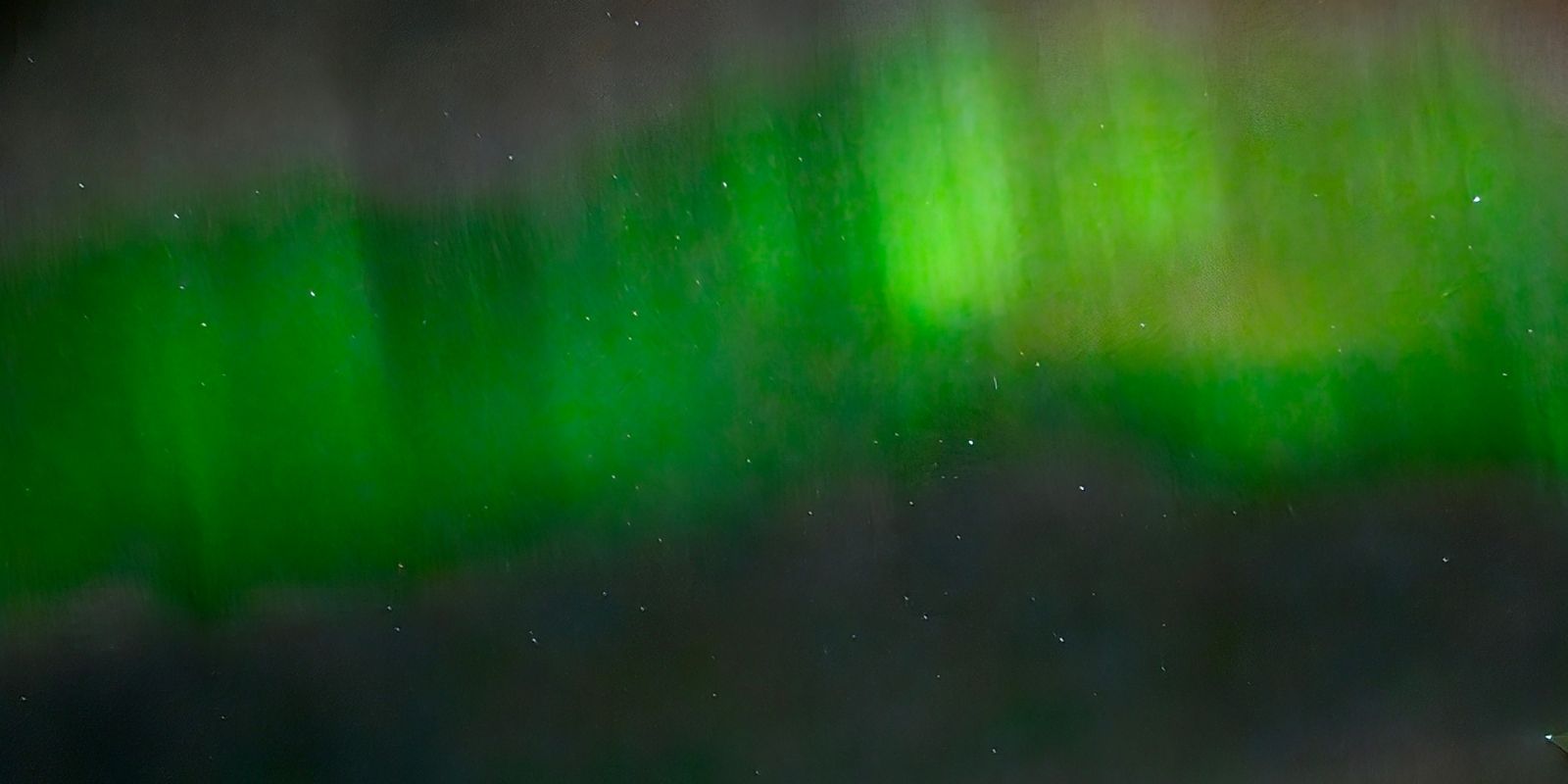
As I was doing the research for my trip to Iceland, I kept reading that you shouldn’t count on seeing the northern lights as a sure thing. You’re supposed to focus on everything else Iceland has to offer, with a possible Aurora Borealis sighting being a nice bonus.
Now, I wasn’t having any of that. I was finally going to Iceland and I was going to see the northern lights. At the very least, I was going to do everything I could to maximize my chances. And that included increasing my chances of seeing them from the plane.
If you’re flying at the right time and you’re sitting in the right seat, your chances of catching a glimpse of the lights from the plane are actually higher than seeing them from the ground. The reason for this is simple: when you’re on the ground, even if the lights are out in all their glory, you won’t see them if they’re behind a thick blanket of clouds (something that happens quite often in Iceland, as I was about to discover). If only you had some way to rise above those clouds… oh wait, you do. A plane!
In this blog post, I’ll tell you everything you need to know to maximize your own chances of seeing the northern lights when you’re flying over the Arctic. Like everything else aurora-related, it comes with the usual disclaimer: the northern lights are a natural phenomenon, and there’s never any guarantee you’re actually going to see them. But if you can’t catch them from the plane, you can always book a northern lights tour on the ground and keep your fingers crossed.
I’ll also tell you about my own experience watching the lights from my flight to Iceland, and about how sometimes when you’re traveling, nothing happens as planned, but in the end, everything works itself out.
How to increase your chances of seeing the northern lights from a plane
Let’s start with the basic requirements. First of all, it has to be dark out, and that is a must. You can only see the northern lights from the plane if you’re flying at a time of the year when it actually gets dark in the Arctic. If your flight is between May and August, you’re pretty much out of luck – although sometimes there are sightings in early May or late August, so you never know.
This table shows you the number of daylight hours in Iceland by month:
| Month | Daylight hours |
| January | 4-6 |
| February | 7-10 |
| March | 10-13 |
| April | 13-16 |
| May | 16-20 |
| June | ~24 |
| July | ~24 |
| August | 14-17 |
| September | 11-14 |
| October | 8-11 |
| November | 5-7 |
| December | 4-5 |
The best times to catch the northern lights are around the equinoxes. There are two of those each year:
- Spring Equinox: around March 20–21
- Autumn Equinox: around September 22–23
That said, it’s possible to see the northern lights anytime between September and April, and some even say they may become more intense over the next few decades. So if you’re flying during the fall, winter, or spring, you’ll want to be prepared.
When choosing a flight, try to book one that lands in your Arctic destination sometime around midnight – most sightings happen between 10 p.m. and 2 a.m., so that’s when you’ll want to be in the air.
I had booked the perfect flight to Iceland.
March 21, landing just before midnight. 8-hour layover in London, giving me just enough time to hop on a train to the city and have lunch with some friends I hadn’t seen in a while.
But you know what they say about life and making plans.
When I arrived at the airport that morning, I soon learned that my flight out was delayed… and then canceled, due to a fire right outside Heathrow. The international hub was shutting down for the next 24 hours, with no flights coming in or out.
I had to think fast, so I jumped on Kayak and booked a different flight to Iceland, this time with a layover in Vienna. I’d be landing in Reykjavik around the same time as I was supposed to with the first flight. All was good. I had even saved some money on this new flight.
Choosing the best seat on the plane to see the northern lights
Many airlines charge extra to book a seat in advance. In this case, it’s totally worth it. You’ll want to book a window seat, obviously, and you’ll want to make sure it’s on the side of the plane that’s facing north.
- If you’re flying west-to-east, book a seat on the left side of the plane. On just about every plane I’ve ever been on, this has been seat A.
- If you’re flying east-to-west, book a seat on the right side of the plane. Depending on the aircraft, this could be F, G, H, J, or K – or to keep things simple, it’s the window seat that isn’t A.
Try to get a seat that’s not over the wing, as some light can reflect off it and obscure your view.
Always expect the unexpected
It’s all great when you have some time to research your options and choose your seat carefully, but while standing in line to check in to my alternative, last-minute flight to Reykjavik, I realized I had made a Really. Dumb. Mistake.
I’d quickly chosen a window seat, my default preference, but I hadn’t been thinking about the northern lights at that moment, and my seat was on the wrong side of the plane.
Frantically, I went to the airline website and tried to change my seat, even willing to pay extra if I had to, but it was too late. It was a hectic day for air travel all over the world, and the plane was almost full. All the F seats were taken. Oh F. Oh no. NO.
Not feeling very hopeful but still unwilling to accept my new fate, I had to ask the check-in agent if there was any chance she could move me to a window seat on the other side of the plane. And incredibly enough, there was a seat available. All was good again.
How to photograph the northern lights from a plane
While you might not get the highest-quality shots from a plane window, photographing the Aurora Borealis – if it’s out that night – is easy. Well, easy-ish. Well, it kind of depends on your fellow passengers. But I’ll get to that in a moment.
One important thing to remember is that on most nights when the northern lights are out, they don’t look like what you’ve seen in photos – at least not to the naked eye. Unless the aurora is particularly bright that night, all you’ll see is some silvery-gray streaks that don’t quite look like clouds. When you photograph those streaks with long exposure, your camera can pick up the colors.
The magic words
Yes, I’ll admit it – after my long day of dealing with airport stuff, I was so excited about the prospects of seeing the northern lights that night that I started taking photos out the window like 20 minutes after the plane had taken off from Vienna. That would be… over the Czech Republic, I guess? Yeah, no northern lights over Prague.
But a little over an hour later, something was happening. We were flying over Norway, and as I was glued to my window, I noticed a grayish streak across the sky. It can’t be, I told myself. It’s probably just a weird cloud.
Of course, I had to take a photo anyway. When I looked at what my camera had picked up, the streak was… kind of blueish-greenish. It can’t be, I told myself again. It’s nothing. My camera is just acting weird.
After taking a few more shots, the streak was becoming slightly greener, but still not that vivid neon green. At that point, I turned to the guy sitting next to me, who looked like this wasn’t his first time flying to Iceland. “Is this…” Pointing at the window and then at my camera, I couldn’t even bring myself to say it.
“Yes,” he said. “It’s the polar lights.”
The polar lights. I’d never heard them called that before, but at that moment, these were the three most beautiful words I’d ever heard. I think maybe they still are.
Middle-seat guy showed me how to set my phone camera to night mode. And then, the greens started getting brighter.
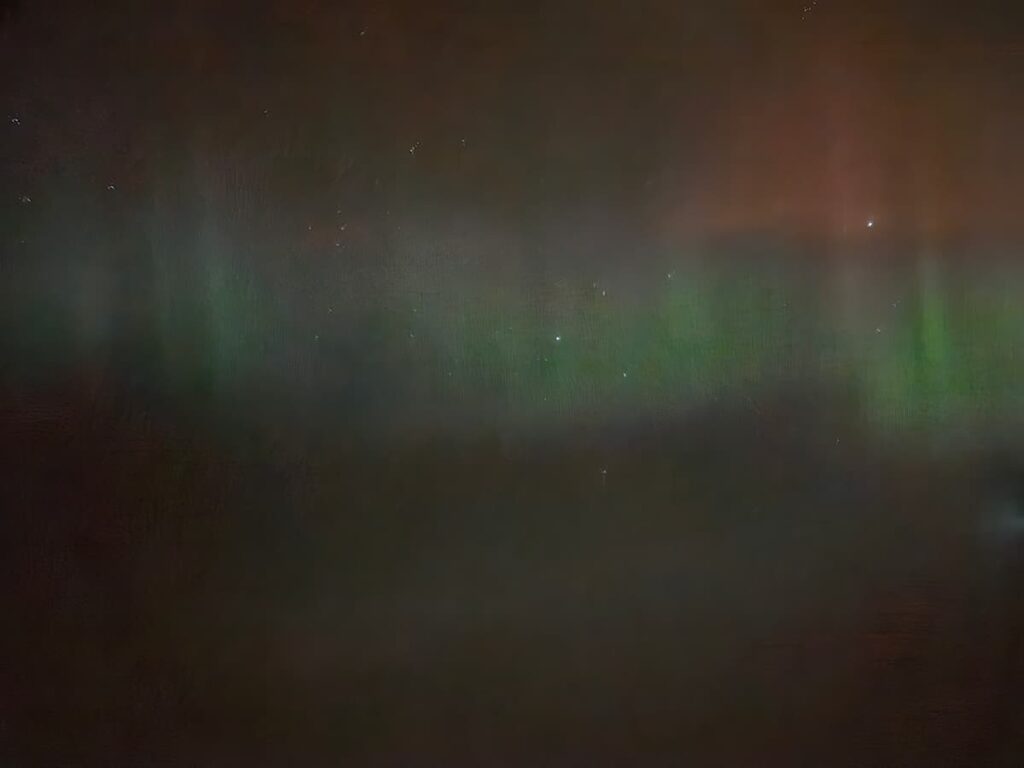
On your flight, you’ll want to keep your eye on the window all the time – be sure not to fall asleep! If anything in the sky looks out of the ordinary, set your phone camera to night mode and start taking pictures. Be patient. There’s nothing quite as magical as checking your photos and discovering those beautiful colors.
When photographing the northern lights from the ground, you’ll want to use a tripod to get the best shots. That’s not really an option when you’re on a plane, but you can do the next best thing – press your phone up to the window to stable it, and hold it completely still while you’re taking each photo.
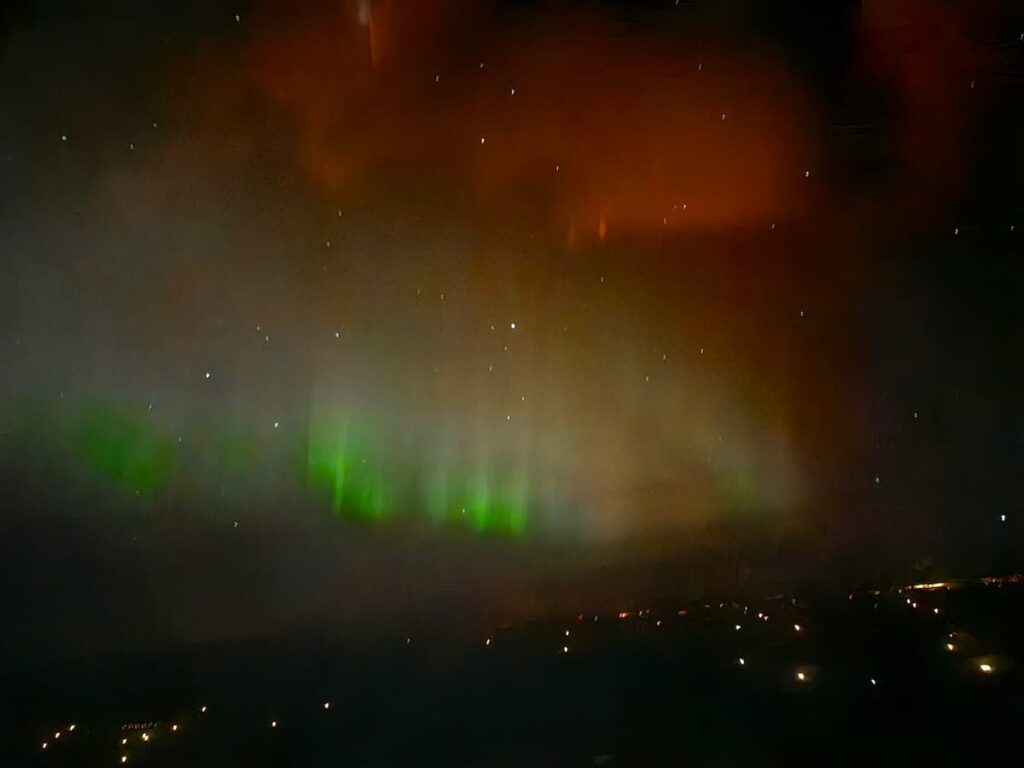
You’ll also need the cabin lights to be off. At night, any light inside the plane reflects on the windows and completely obscures your view.
Now, same as you can’t control the northern lights, you can’t control the lights inside the plane either. The lights are normally kept off during nighttime flights, but if the crew decides to light up the cabin for whatever reason or if other passengers are using their reading lamps, you’ve got a problem. And oh, I had a problem.
Middle-seat guy and aisle-seat guy
I’ll always remember middle-seat guy fondly for helping me see the northern lights – the polar lights – for the very first time in my life. But then, there was aisle-seat guy. Just thinking about aisle-seat guy makes me angry.
It was finally happening – I was actually witnessing the northern lights. It was the most magical of magical moments. But not more than five minutes later, aisle-seat guy decided he had to read a book, and on goes the reading lamp. He’s literally the only person on the plane who’s insisting on keeping his lamp on, but this doesn’t seem to bother him.
It’s weird to think about, really. A week or so later, when the clouds over Reykjavik had (kind of) cleared up and I was on my first northern lights tour, the Icelandic guide mentioned how as a kid growing up, she had no idea the northern lights were anything special. She’d just assumed they were visible all over the world. For people who live in the Arctic, I guess it’s like seeing a sunset – once in a while you might see a spectacular one, but most of the time, they’re just there, just… there. Normal. Whatever.
Aisle-seat guy either doesn’t see anything special about a northern lights show, or he just doesn’t care. And I hate him. But I’ve gotten this far and I’m not going to let him stop me.
I cover myself, my window, and my phone with my big black coat, awkwardly holding it over my head and pressing it to the top of the window so no light can come in. And that is how I spend the rest of the flight photographing the northern lights. I come out for air once in a while, throwing a few particularly hateful glares in aisle-seat guy’s direction, but he doesn’t seem to notice. But aside from that, it’s just me and the lights.
And what a glorious flight it was.
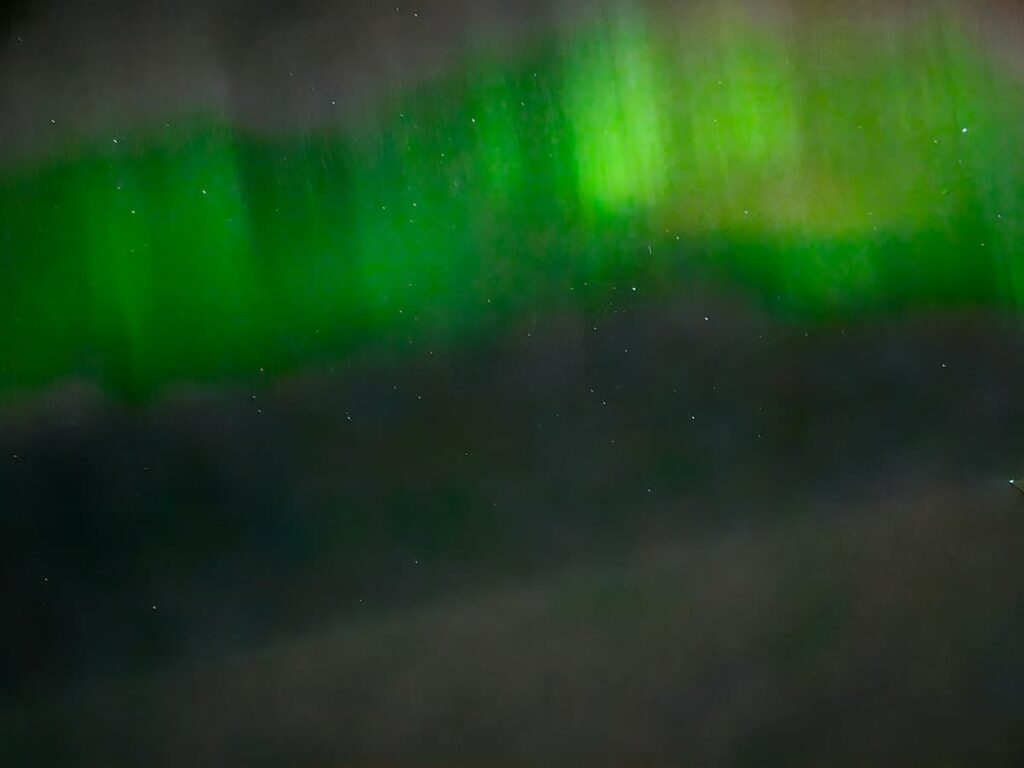
Summing it up: How to see the northern lights from a plane
It’s totally possible to see the northern lights from a plane, especially if you’re well-prepared.
- Fly to an arctic destination sometime between September and April.
Try to make it around one of the equinoxes for the best results. You might get lucky in early May or late August.
- Choose a flight that lands in the destination between 10 p.m. and 2 a.m.
You may have more flexibility during the winter months, when the nights are much longer.
- Book a window seat on the side of the plane that’s facing north.
That’s left side (seat A) for eastbound flights, right side (F, G, H, J, or K) for westbound flights.
- Keep your eyes open for silvery streaks in the sky.
If it doesn’t quite look like a cloud, it might be an aurora.
- Set your camera to night mode.
Press it up to the window to keep it stable, and hold it completely still while you’re taking pictures.
- Hope and pray for a dark cabin.
If there are lights on in the cabin, try covering yourself and your window with a coat or a blanket to avoid reflections.
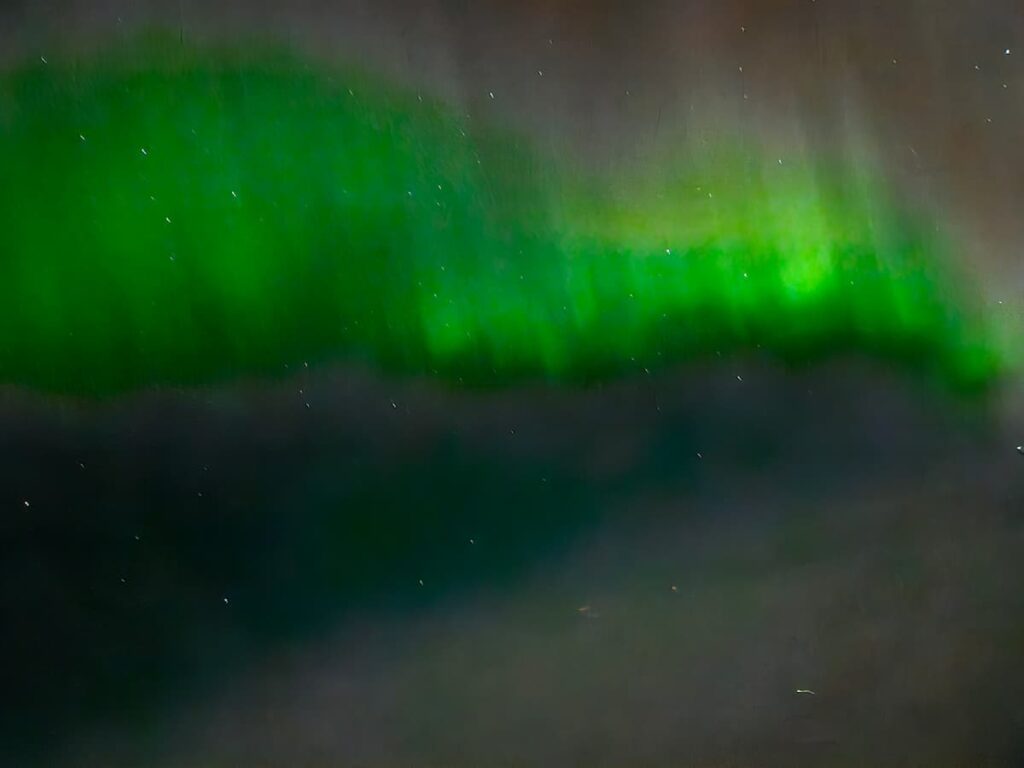
FAQs: How to see the northern lights from a plane
Yes, there are several ways to increase your chances. You need darkness, clear skies, and solar activity. Get away from city lights, check an aurora forecast app, let your eyes adjust, and be patient. And if you’re on a plane, book a window seat facing north and hope for a smooth, quiet flight.
The best months are September through March, with peak activity often around the equinoxes in late September and late March. These months combine long dark nights with higher geomagnetic activity – just what you want for aurora spotting.
Because cameras, especially in night mode or with long exposure, can capture light that’s too faint for your eyes. The human eye struggles to detect color in low light, but your phone can pick up the greens and purples hiding in what just looks like a gray streak to you.
Some companies offer dedicated aurora flights, especially in the UK and parts of Scandinavia. These are special charter flights timed for high aurora activity and clear skies, with experienced guides and commentary onboard. But most people just catch them on regular commercial flights if the timing and conditions are right.
Definitely. Icelandair flights often pass over high-latitude areas with strong aurora activity. Choose a window seat on the north-facing side of the plane during an evening flight in aurora season, and you might just get lucky.
It’s possible, especially on late-night AirBaltic flights heading toward or over the Arctic region. Routes between Northern or Eastern Europe and Iceland, Finland, or Norway offer a chance, as long as you’re flying in the right season and the skies are clear.
Yes, if it’s dark enough and the cabin lights are dimmed, you can see stars from a plane. The higher altitude actually puts you above much of the atmospheric haze and light pollution—but reflections on the window or cabin lights can make them hard to spot.

